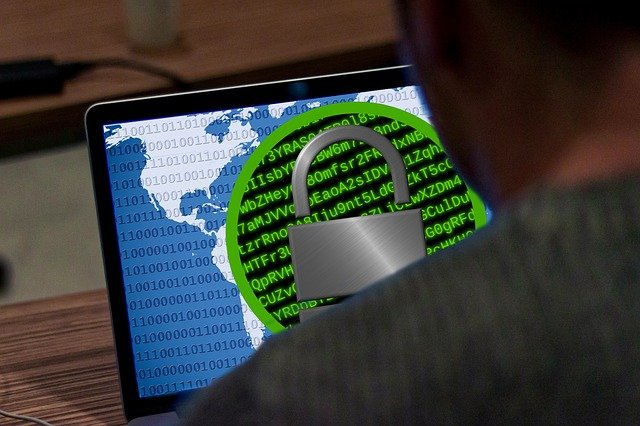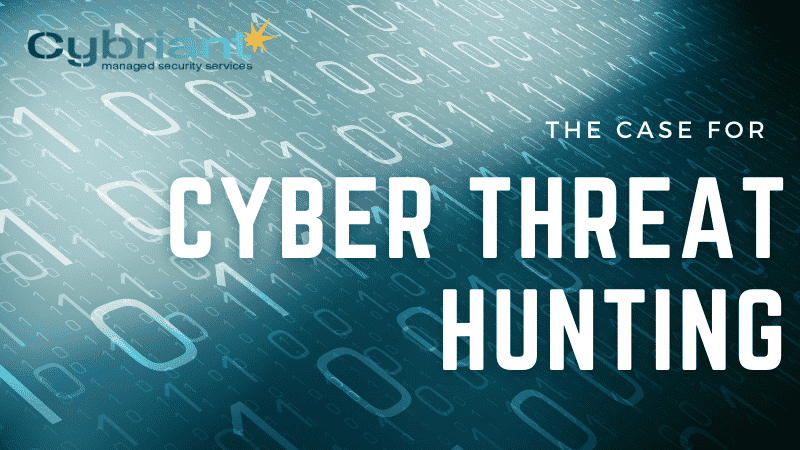Cyber threat hunting is the process of actively seeking out potential threats in your network and eliminating them before they can cause harm. But, is this a service your organization needs?
Hackers are always looking for new vulnerabilities to exploit, and they’re becoming increasingly sophisticated in their methods. To protect your business, it’s essential to have a comprehensive security strategy in place.
What Does a Threat Hunter Do?
A threat hunter is a professional who specializes in identifying and mitigating threats to an organization’s information security. They work to identify potential security vulnerabilities and mitigation strategies before a threat can be exploited.
A threat hunter is a professional who specializes in identifying and mitigating threats to an organization’s information security. They work to identify potential security vulnerabilities and mitigation strategies before a threat can be exploited. In many cases, threat hunters are also responsible for developing new methods and techniques for detecting threats.
Organizations that employ threat-hunting teams typically do so in order to supplement their existing security measures. Threat hunting can help organizations to identify previously unknown threats, as well as to better understand the behavior of known threats. This information can then be used to improve an organization’s overall security posture.
Threat-hunting teams typically use a combination of manual and automated methods to detect threats. Manual methods may include reviewing log files or network traffic for suspicious activity. Automated methods may include using machine learning algorithms to identify patterns of behavior that could indicate a potential threat.
The goal of threat hunting is to proactively find and mitigate threats before they can cause damage to an organization. By identifying and understanding the behavior of threats, organizations can better protect themselves against future attacks.

But simply having security measures in place isn’t enough – you need to be proactive in identifying and mitigating threats before they can do damage. That’s where cyber threat hunting comes in.
Cyber hunting is the process of actively seeking out potential threats in your network and eliminating them before they can cause harm. It’s a vital component of any business security strategy, and it can make a big difference in protecting your company from online attacks. So why is cyber threat hunting so important? And how can you get started?
The Importance Of Cyber Threat Hunting
There are many reasons why cyber threat hunting is so important. Most importantly, it can help you to identify potential threats before they have a chance to do damage. By proactively seeking out vulnerabilities, you can fix them before hackers have a chance to exploit them.
Threat hunters use threat intelligence and exceptional tactics techniques and procedures to identify potential threats and then take action to mitigate them. This can involve anything from patching vulnerabilities to implementing security controls.
Consider a Threat Hunting Team
In many cases, threat hunting can help you to avoid costly breaches. The average cost of a data breach is over $3 million – and that number is only going to increase as hackers become more sophisticated. By identifying and eliminating threats before they can cause damage, you can save your business a lot of money in the long run.
In addition to saving money, customized threat hunting can also help to protect your brand reputation. Data breaches can have a major impact on public perception, and they can damage your relationships with customers and partners.
By proactively hunting for threats, you can reduce the chances of a breach occurring in the first place. This can help to protect your brand and maintain customer trust.
Threat Hunting Models
There are three main types of threat-hunting models: reactive, proactive, and predictive.
Reactive threat hunting is the most common type. In this model, you only hunt for threats after they have already been detected in your network. This can be a very time-consuming process, and it can be difficult to find all the threats that are lurking in your network.
Proactive threat hunting is a more proactive approach. In this model, you hunt for potential threats before they have a chance to cause harm. This can be a more efficient way to find and eliminate threats, but it requires regular updates to your security tools and processes so that you can stay ahead of the latest threats.
Predictive threat hunting is the most advanced type of threat hunting. In this model, you use data analytics and machine learning to predict which threats may be coming next. This can help you proactively protect your network from future attacks.
Active threat hunting refers to the proactive identification of threats that may have bypassed security controls. This can be done through manual or automated means, and often involves using specialized tools and techniques to identify malicious activity.
How To Get Started With Cyber Threat Hunting
If you’re interested in getting started with cyber threat hunting, there are a few things you need to do. First, you need to build a strong foundation of security controls. This will give you a good starting point for identifying and mitigating threats.
Next, you need to develop a comprehensive threat intelligence strategy. This will help you to identify potential threats and understand the risks they pose to your business.
Finally, you need to put together a team of skilled threat hunters. These individuals should have experience in security, incident response, and network forensics. They should also be able to work effectively as part of a team and understand the most up-to-date threat hunting methodologies. If you prefer to outsource, there are many threat hunting companies.
What is Cyber Threat Hunting in Cybersecurity?

Cyber hunting is the proactive search for cyber threats to neutralize them before they can do damage. This activity is usually carried out by security professionals who specialize in cyber security.
Cyber hunting generally involves the use of tools and techniques that are designed to find, identify, and track down cyber threats. Once a threat has been located, the threat hunters will then work to neutralize it.
This may involve taking steps to isolate the threat or working to remove it entirely from the system. Cyber hunting is an important part of cyber security, as it helps to protect systems and data from harm using threat intelligence indicator searches.
What is Threat Hunting in SOC?
Threat hunting is usually performed by a security operations center (SOC) team, which uses a variety of tools and techniques to find signs of malicious activity. Some common threat hunting strategies include analyzing system logs, inspecting network traffic, and reverse-engineering malware samples.
By constantly searching for new threats, SOC teams can help to keep their organizations safe from the ever-changing landscape of cybersecurity threats.
Automated cybersecurity tools traditionally used by a SOC will typically catch around 80% of threats. Threat hunting is vital for sophisticated attacks. Skilled cyber threat hunters will use successful data analysis procedures, and machine learning to help mitigate threats.
Should I Hire a Threat Hunting Service?
There are several factors to consider when deciding whether or not to hire a threat-hunting service. These include the size and complexity of your organization, the types of threats you are most likely to face, and your overall security posture.
If you are concerned about sophisticated cyber attacks, then hiring a cyber hunter solution may be the best option for you. A threat-hunting service can help to find and neutralize threats before they cause damage.
However, if you are more concerned about simple cyber threats, then hiring a threat detection service may be a better choice. A threat detection service can help you identify and respond to potential threats quickly and effectively.
What Tools Are Required for Cyber Threat Hunting?

Cyber threat hunting requires several different tools, depending on the specific needs of the organization. Some common tools used in cyber threat hunting include network monitors, intrusion detection systems, malware analysis toolkits, and security information and event management (SIEM) systems.
Organizations may also choose to use honeypots, which are systems designed to lure attackers and collect data about their activities.
To be effective, cyber threat hunting must be constantly updated with the latest information about new threats. This can be accomplished through the use of threat intelligence platforms, which provide real-time data about the latest cybersecurity threats.
Organizations may also choose to hire a threat hunting service, which can provide expert assistance in identifying and responding to threats.
Cyber Security Controls Assessment
With the frequency and sophistication of cyber attacks on the rise, it is essential for businesses to take proactive measures to protect their data and networks. One way to do this is to conduct a cyber security controls assessment. This assessment can help businesses identify hidden security gaps and take steps to close them. Cyber Hunter Solutions provides comprehensive cyber security consulting services, including control assessments. Our team of cyber security experts will work with you to identify vulnerabilities and develop a plan to mitigate them. Contact us today to learn more about our cyber security solutions.
Is Cyber Threat Hunting Necessary?
The decision of whether or not to implement cyber threat hunting depends on several factors, including the size and complexity of your organization, the types of threats you are most likely to face, and your overall security posture. If you are concerned about sophisticated cyber attacks, then cyber threat hunting may be the best option for you.
How does Cyber Threat Hunting work?

The process of cyber threat hunting usually begins with the identification of a potential threat. This can be done through the use of network monitoring, intrusion detection systems, and malware analysis. Once a threat has been identified, it is then assessed for its impact and severity. Based on this assessment, a response plan is put in place to mitigate the threat.
Organizations may also choose to use honeypots, which are systems designed to lure attackers and collect data about their activities. To be effective, cyber threat hunting must be constantly updated with the latest information about new threats. This can be accomplished through threat intelligence platforms, which provide real-time data about the latest cybersecurity threats.
What are the benefits of Cyber Threat Hunting?
Cyber threat hunting can provide several benefits for organizations, including the following:
- Helps to identify and neutralize threats before they cause damage
- Can be used to collect data about attacker activities
- Can help to improve an organization’s overall security posture
- Can be used to improve the efficiency of security operations
Threat Hunting Tools List
1. Kaspersky Security Center – Network Threat Prevention
2. McAfee Advanced Threat Defense
3. Symantec Endpoint Protection – Advanced Threat Protection
4. F-Secure Radar
5. Trend Micro Deep Discovery Inspector
6. FireEye HX Series appliances
7. Palo Alto Networks WildFire
8. Cisco AMP for Endpoints
9. IBM QRadar SIEM
10. Splunk Enterprise Security Suite
11. RSA NetWitness Platform
12. ArcSight Enterprise Security Manager
13. LogRhythm NextGen SIEM Platform
14. IBM i2 Analyst’s Notebook
15. Recorded Future
16. ReversingLabs TitaniumPlatform
17. ThreatConnect Platform
18. Anomali ThreatStream
19. EclecticIQ Platform
20. Phantom Cyber Corporation’s Phantom Security Orchestration, Automation and Response platform (Phantom)
What are the challenges of Cyber Threat Hunting?
Cyber threat hunting can be a difficult and time-consuming process. It requires a high level of expertise and knowledge about cybersecurity threats. Additionally, it can be challenging to keep up with the latest information about new threats.
Organizations may also choose to hire a threat hunting service, which can provide expert assistance in identifying and responding to threats. However, this option can be expensive and may not be feasible for all organizations.

To be effective, cyber threat hunting must be constantly updated with the latest information about new threats. This can be accomplished through the use of threat intelligence platforms that updates through routine data collection, which provides real-time data about the latest cybersecurity threats.
Organizations may also choose to hire a threat hunting service, which can provide expert assistance in identifying and responding to threats. However, this option can be expensive and may not be feasible for all organizations.
While automated security tools are incredibly helpful in security strategies, especially when using artificial intelligence, human threat hunters are invaluable in keeping potential risks at bay.
Threat Hunting Maturity Model
A threat hunting maturity model is a framework that can be used to assess the readiness of an organization to engage in cyber threat hunting. The model can be used to identify the areas where an organization needs improvement and to provide guidance on how to improve.
The threat hunting maturity model consists of five stages: awareness, preparation, detection, response, and continuous improvement.
Awareness:
The first stage of the threat hunting maturity model is awareness. In this stage, organizations should have a basic understanding of what cyber threat hunting is and its benefits. Additionally, they should be aware of the types of threats they are most likely to face and the potential damage that can be caused by these threats.
Preparation:
The second stage of the threat hunting maturity model is preparation. In this stage, organizations should develop a clear understanding of their goals and objectives for cyber threat hunting. They should also create a plan for how they will conduct threat hunting operations and what resources they will need. Additionally, they should identify the individuals who will be responsible for carrying out threat hunting activities.
Detection:
The third stage of the threat hunting maturity model is detection. In this stage, organizations should have the ability to detect potential threats through the use of security tools and processes. Additionally, they should have a system in place for identifying and responding to suspicious activity.
Response:
The fourth stage of the threat hunting maturity model is the response. In this stage, organizations should have a plan in place for how they will respond to threats that are identified. This plan should include the steps that will be taken to neutralize the threat and prevent it from causing damage. Additionally, the plan should identify the individuals who will be responsible for carrying out the response.
Continuous Improvement:
The fifth stage of the threat hunting maturity model is continuous improvement. In this stage, organizations should constantly review and revise their threat hunting operations to ensure that they are effective. Additionally, they should identify new threats and develop plans for how to address them.
Threat Hunting Platform
In the age of big data, Security analysts are turning to threat hunting to detect malicious activity and investigate attacks that have already breached their organizations. But what is threat hunting, and how can your organization benefit from this proactive security approach?
Threat hunting is a method of proactively and iteratively searching through networks or systems to detect and isolate advanced threats that have evaded traditional security defenses. It’s a continuous process that involves the use of skilled security analysts, cutting-edge technology, and creative thinking to investigate and map out an organization’s attack surface.
Organizations that implement threat hunting can improve their overall security posture by detecting attacks early, understanding the full scope of an attack, and providing actionable intelligence that can be used to improve security defenses.
There are many different ways to approach threat hunting, but most methodologies share common elements:
1. Identify goals and objectives.
2. Collect and analyze data.
3. Develop hypotheses based on analysis.
4. Test hypotheses and take action.
5. Monitor results and refine the approach.
The best technique of threat hunting and threat-hunting platforms are those that allow security analysts to quickly and easily collect, analyze, and visualize data from multiple sources.
Threat Hunting vs. Threat Intelligence
Threat hunting and threat intelligence are often used interchangeably, but they are two distinct concepts. Threat intelligence is the data-driven process of understanding the who, what, when, where, and why of an attacker or attack. It helps organizations build a profile of an attacker and understand their motives, capabilities, and methods. This information can then be used to inform and improve security defenses.
Threat hunting, on the other hand, is the process of actively searching for signs of an attack that has already evaded detection. It’s a reactive security measure that is often used in conjunction with threat intelligence. By combining the two approaches, organizations can improve their overall security posture and better defend against sophisticated attacks.
When it comes to choosing a threat hunting platform, there are a few key considerations that organizations should keep in mind:
1. Ease of Use: The platform should be easy to use and allow security analysts to quickly collect, analyze, and visualize data from multiple sources.
2. Flexibility: The platform should be flexible and allow for customization based on the specific needs of the organization.
3. Integration: The platform should integrate seamlessly with existing security infrastructure and tools.
4. Scalability: The platform should be able to scale as the organization grows and evolve over time.
The best threat-hunting platforms are those that combine all of these elements to provide a comprehensive solution for security analysts.
Organizations that are serious about threat hunting should consider investing in a platform that can help them automate and streamline the process. A threat hunting platform can save time and resources by automating data collection, analysis, and reporting. It can also provide analysts with the ability to quickly pivot and investigate new leads.
The bottom line is that threat hunting is a critical security measure that can help organizations detect and respond to attacks before they cause damage. When combined with threat intelligence, it can provide a powerful defense against even the most sophisticated attackers.
Managed Proactive threat hunting is a process of identifying and addressing potential security risks before they can cause damage. This can be done through a combination of system monitoring and human analysis, which allows for early identification of threats and quick response times.
Threat Hunting Ideas
1. Look for anomalous user behavior: Monitor user accounts and detect any irregular login patterns, such as logins from strange locations or access to resources they don’t usually use.
2. Pay attention to system changes: Analyze the system logs and look out for any suspicious changes that could be indicative of an attack, such as modifications to system settings or unexpected software installations.
3. Monitor external events: Keep an eye on activities occurring outside of your network, such as suspicious activity in the public cloud services you use and news reports about new malware variants targeting similar systems.
4. Set up honeypots: Create decoy systems that mimic production environments to draw attackers away from your real systems and detect malicious behavior.
5. Utilize automated tools: Automate the collection, aggregation, and analysis of system logs to reduce manual processes and uncover hidden threats more quickly.
6. Leverage third-party intelligence: Monitor for news about new threats, indicators of compromise (IoCs), and other intelligence that can help you anticipate attacks before they happen.
7. Invest in employee training: Educate your employees on the basics of cyber security, as well as how to recognize suspicious activities and take appropriate action in response.
8. Implement threat-hunting tactics: Analyze system logs for signs of malicious activity, such as unusual system connections or file modifications, and actively hunt for threats in your environment.
9. Utilize the latest security technologies: Stay informed about the latest developments in cyber security and make sure you’re taking advantage of the best tools and practices to protect yourself against attacks.
10. Conduct regular vulnerability assessments: Identify and address any vulnerabilities in your systems, such as outdated software or weak passwords, before attackers can exploit them.
By following these steps, you’ll be better equipped to detect and respond to cyber threats before they cause significant harm to your organization. Taking a proactive approach to threat hunting is an essential part of any successful security program.
Custom Threat Hunt in Cybersecurity
Custom threat hunts are a great way to stay ahead of the ever-evolving threats in cybersecurity. A custom threat hunt is an inquiry into specific security incidents and anomalies in order to identify hidden malicious activity that may be occurring within your environment. The process involves analyzing large volumes of logs, events, and other data sources for the purpose of detecting potential threats or incidents. During a custom threat hunt, security experts look for indicators of compromise that could help identify malicious actors and their techniques in order to take action before they cause damage to your organization.
Custom threat hunts are different from traditional incident response operations in that they are proactive rather than reactive. They often involve the use of sophisticated tools and techniques to analyze large amounts of data and uncover hidden clues that can lead to the detection of malicious activity. Additionally, custom threat hunts can be tailored to a specific organization’s environment in order to maximize its effectiveness.
Custom threat hunts are becoming increasingly popular as organizations realize their importance in keeping up with today’s ever-changing threats. A successful custom threat hunt will enable organizations to detect potential threats before they can cause significant damage and allow for the development of preventative measures to stop them from occurring in the future. By taking advantage of these proactive security measures, organizations are better equipped to protect their data and assets against malicious actors.
Conclusion
The Ponemon Institute’s study found that the average cost of a data breach is $3.86 million, so it is clear that organizations need to take every step possible to protect their networks and data. One such step is engaging in regular cyber threat hunting activities.
Threat hunting involves proactively searching for threats on your network before they cause damage. It is a vital activity that should be done by a certified cyber threat hunting professional who has the expertise and tools necessary to identify and mitigate risks quickly.
If you are not currently engaged in cyber threat hunting, we encourage you to consider Managed Security Services as a way to improve your organization’s security posture. Our team of experts has the experience and knowledge necessary to help you stay ahead of the latest cybersecurity threats. Contact us today to learn more about our services.
How a Cyber Security Maturity Model Protects Your Business



